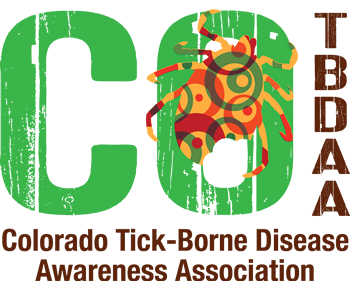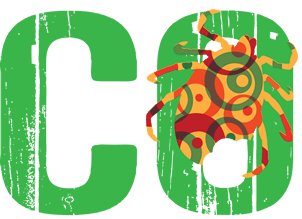
Treatment for Lyme Disease
How is Lyme treated?
Case numbers of infection with B. burgdorferi and other tick-borne pathogens are increasing nationwide, and researchers are discovering new, previously unknown species that cause Lyme disease. When Lyme disease is accurately diagnosed and properly treated during the early stage of disease, patients often recover completely.
Misdiagnosis, delayed diagnosis, and/or inadequate treatment can result in disseminated infection that can have a significant and long-term impact on a person’s daily functioning, cognitive abilities, mood, and overall health. Co-infections often result in more serious and complex illness. Timely, accurate, diagnosis and treatment is therefore critical for the best outcome in patients!
Physicians in Colorado and nationwide have different approaches to treating Lyme disease
It can be challenging to find treatment in Colorado for Lyme and tick-borne diseases. Some physicians believe Lyme can not be contracted within Colorado. Others believe Lyme disease is always cured by a short course of antibiotics. Many are wary of the controversies surrounding Lyme disease treatment. Many Coloradans affected by Lyme and tick-borne diseases have difficulty finding a medical professional trained to diagnosis or treat disseminated or late stage Lyme disease and co-infections, and not all Coloradans are receiving accurate nor timely diagnosis.
There are medical care providers experienced in treating and supporting patients with the complexities of Lyme and tick-borne diseases, though many patients may have to travel hours or even out of state to access these providers. A LLMD is a Lyme Literate Medical Doctor, a doctor trained in diagnosis and treatment of Lyme and other tick-borne infections. Many LLMDs utilize treatment guidelines designed by the International Lyme and Associated Diseases Society (ILADS) and/or alternative treatments and protocols. These practitioners disagree with the IDSA and CDC about the treatment of Lyme disease. Since there is no official certification to become an LLMD, Coloradans should know that any practitioner may refer to themselves a LLMD. Doctors may have differing approaches to treatment. A doctor trained through ILADS or other CME programs may gain experience and skills necessary to better diagnose and treat patients with Lyme or other TBDs. COTBDAA, ILADS, Lymdisease.org, and Project Lyme provide Doctor referral programs to assist patients in locating an LLMD. In addition, our Community Partners at Ravel Health now offer access to virtual healthcare providers specializing in treatment of Lyme and other chronic illnesses across the US. The sooner a tick-borne disease is diagnosed and treated, typically the better the outcome for the patient.
Antibiotics are used to treat Lyme disease
The specific type of antibiotic varies for each patient, and by the stage and severity of the infection and presence of any co-infections. Antibiotic treatment may also differ for young children and pregnant women. Patients with severe presentations, certain neurological or cardiac forms of illness, or ongoing symptoms may require intramuscular or intravenous treatment. The presence of a co-infection may require a more complex treatment plan. Recent studies are finding that antibiotic drug combinations are proving more effective at eradicating persister cells responsible for ongoing illness in some patients in vitro, but controlled studies in humans have not yet been conducted.
Problem with Single Dose Doxycycline
The protocol of single dose doxycycline was reinforced by an article in the Journal of Emergency Medicine, recommending it as a prophylactic for people bitten by a black-legged tick in areas where the rate of ticks infected with Lyme bacteria is greater than 20%. However, several problems exist that suggest this single dose of doxycycline may not serve as an effective prophylactic for Lyme disease.
In addition to antibiotics
Many health care providers may recommend alternative, natural, holistic or homeopathic approaches to treatment or for supportive care. These treatments can strengthen the immune system and assist in the body’s ability to heal. Dietary changes, nutritional support as well as Chinese herbs and acupuncture may also aid your body in healing. There are many protocols involving natural antimicrobial and other supportive herbs developed by practicing physicians tailored to meet the needs of the individual patient, their unique symptoms and response to treatment.
Dr. Myriah Hinchey has presented at Dr. Talks Healing From Lyme Disease Summits:
- Your Guide To Immediate Tick Bite Response
- 10B Approach for Holistically Healing Lyme and Tick-Borne Disease
Breakthroughs in treatment research
Lyme disease continues to be the most prevalent tick-borne disease in the United States and one of the most difficult to treat for a growing number of patients. Researchers across the country are focusing on new treatments for effective eradication of the demonstrated persistent Lyme bacteria, but funding is scarce.
Dapsone Protocol
Dr. Richard Horowitz, LLMD has conducted several clinical studies using combinations of antibiotics with his patients with chronic Lyme disease. Recent publications:
- Efficacy of Short-Term High Dose Pulsed Dapsone Combination Therapy in the Treatment of Chronic Lyme Disease/Post-Treatment Lyme Disease Syndrome (PTLDS) and Associated Co-Infections: A Report of Three Cases and Literature Review
- Effect of dapsone alone and in combination with intracellular antibiotics against the biofilm form of B. burgdorferi
- The Use of Dapsone as a Novel “Persister” Drug in the Treatment of Chronic Lyme Disease/Post Treatment Lyme Disease Syndrome.
- He has also authored a book as a resource for patients and providers: “How Can I Get Better? An Action Plan for Treating Resistant Lyme & Chronic Disease,”
Disulfiram
Dr. Kenneth Liegner, LLMD has recently published on the use of Disulfiram in the treatment of Lyme disease and Babesiosis:
- Disulfiram (Tetraethylthiuram Disulfide) in the Treatment of Lyme Disease and Babesiosis: Report of Experience in Three Cases.
-
Dr. Kenneth Liegner Interview with Disulfiram for Lyme Support Group can be watched here.
-
In the Crucible of Chronic Lyme Disease: Collected Writings & Associated Materials
- Dr. Brian Fallon, from Columbia University Lyme & Tick-Borne Disease Research Center is currently recruiting for a clinical trial to study the effects of Disulfiram on patients with Lyme disease.
Essential Oils
A group of researchers from Johns Hopkins Bloomberg School of Public Health recently identified several essential oils, derived from common spice or culinary herbs, that have better antimicrobial activity against the bacteria that causes Lyme disease than some antibiotics. In this study, researchers screened a panel of 34 essential oils, and identified the three most effective against Borrelia burgdorferi (Bb), the bacteria which causes Lyme disease, in the laboratory. These oils include oregano, cinnamon bark and clove bud. Dr. Ying Zhang, one of the researchers in this study, is a Professor of Molecular Microbiology and Immunology at Johns Hopkins Bloomberg School of Public Health. Dr. Zhang is a leader in research targeted at finding effective treatments for drug resistant and persistent bacterial infections and has directed several projects towards finding more effective treatments against the persistent form of Bb.
In another study, laboratory research published by Dr. Eva Sapi of New Haven University, shows the effectiveness of whole leaf stevia against Borrelia burgdorferi, the spirochete that causes Lyme disease. The effectiveness of Stevia was compared to doxycycline, cefoperazone, daptomycin, and their combinations. Important to note is that Stevia was effective as a bio-film buster in conjunction with antibiotics, in vitro.
Both Dr. Ying Zhang’s study and Dr. Eva Sapi’s studies were performed in-vitro (meaning it was conducted in a petri dish in a laboratory). And while laboratory research is critical to the advancement of science, the effectiveness of these herbs in humans will not be known until human clinical studies are conducted.
Treatment for Lyme disease may not be enough
The recommended treatment for Lyme may not work for co-infections that can be transmitted through the bite of the same tick or from a separate tick bite. A practitioner who understands tick-borne diseases will consider the possible need to both test for and treat co-infections as well as Lyme disease. Prior infection with Lyme disease does not create immunity. Even if treated successfully, re-infection is possible with additional tick exposures and relapses of infection may occur even after what is deemed as “adequate” treatment.
The Controversy About Lyme Treatment: Two Standards of Care
Two standards of care in regard to Lyme and many other other tick-borne diseases has resulted in difficulty for both providers and patients to navigate conflicting guidelines and recommendations. Part of the reason for the debate is that there is currently no definitive direct detection test available that can determine whether the Lyme bacteria have been effectively eliminated from the body after treatment. Further, there is much debate about how to treat late stage, chronic, persistent or “Post Treatment Lyme Disease (PTLDS).” Some argue that continued antibiotic treatment is the right course, while others cite risks associated with long-term antibiotic use.
This divide has resulted in a lawsuit filed in 2017 on behalf of Lyme disease patients who say they have been denied care and harmed under existing insurance and medical protocols. Eight insurance companies have settled with the plaintiffs to date.
- ILADS (International Lyme and Associated Diseases Society) Guidelines, 2014
- IDSA (Infectious Diseases Society of America) Guidelines, 2006 and IDSA (Revised Gudelines), 2020
The main difference between the guidelines of the IDSA and those of ILADS is that in the face of scientific uncertainty, the ILADS guidelines defer to clinical judgment and patient preferences, while those of the IDSA make very strong recommendations against treatment and severely restrict the use of clinical judgment.
ILADS offers an annotated appendix with comparisons of the IDSA (2006) and ILADS guidelines
The Infectious Disease Society of America (IDSA) published their revised guidelines on November, 30 2020. There was much contention from the Lyme community regarding the lack of patient representation during the revision process, as well as the continued restrictive guidance for treatment of patients with chronic or persistent illness in these “new” guidelines.
Medical care providers and patients have a right to know that there are differing professional opinions in regard to the treatment of Lyme disease and other tick-borne infections. This awareness is critical for the shared decision making process regarding diagnosis and treatment; and is critical for advocating for quality of life and health for yourself, your family or your patients.
The course of medical care should be determined between the patient and their medical care provider on an individual basis through a shared decision making process. The only way to do this is to for physicians and patients to be aware off and given access to both treatment guidelines. Physicians, especially primary care and urgent care medical providers, in Colorado can seek additional training in the diagnosis and treatment of Lyme & other tick-borne diseases to improve early detection of these illnesses.
The International Lyme and Associated Diseases Society (ILADS) offers a Physician Training Program. Their goal is to foster excellence in care for Lyme disease patients, addressing the challenges and changes in effectively diagnosing and treating tick-borne diseases. Scholarships are available.
Other Continuing Medical Education programs that can aid medical care providers in gaining experience with Lyme and other TBD’s can be found here.
Colorado medical care providers and patients need to be aware of the status of Lyme and other tick-borne diseases and the conflicting guidelines for treatment so that they may best advocate for themselves, their loved ones and/or their patients.







